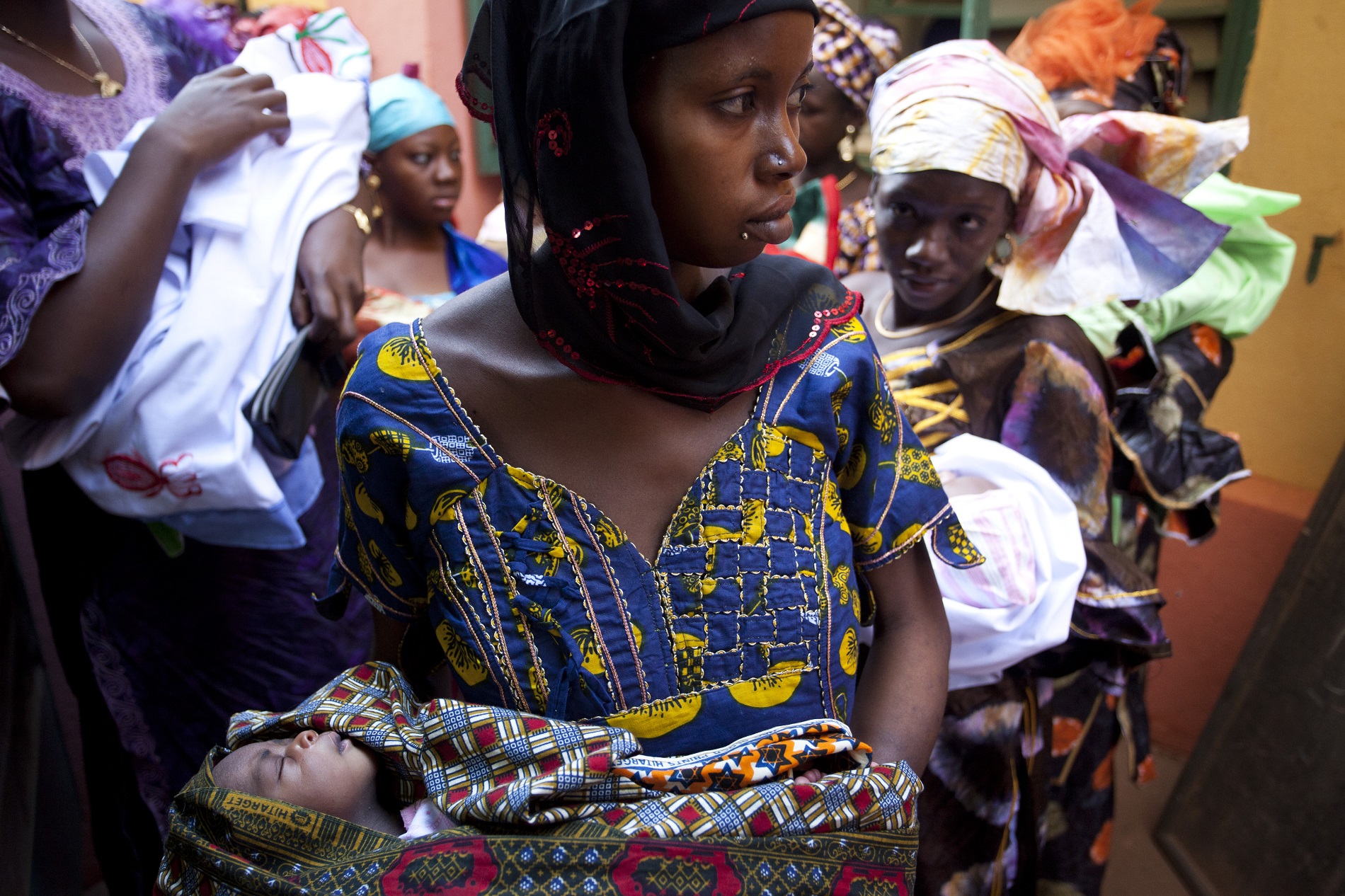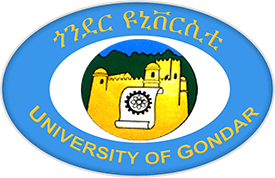IPGMER
IPGMER are working with IDDO to develop VL data standards and are represented on the VL Scientific Advisory Committee.



Sadie rejoined IDDO in September 2024 as a Data Manager. She works on the management and transformation of diverse data sets that are submitted to WWARN/IDDO and ensures the completeness and accuracy of data in the WWARN/IDDO data repository. Sadie worked with IDDO from March 2020 to September 2023 leading the curation of COVID-19 datasets.
In September 2023, she moved to the Department of Biology, Oxford University, as a Health Data Scientist where she worked on data systems in early pandemic response.
Prior to that, Sadie worked as a Senior Data Manager at the Primary Care Clinical Trials Unit, University of Oxford, where she was responsible for oversight of all clinical trial data collected in the unit.
Sadie has a BSc in Medical Molecular Biology from Cardiff University and a PhD from the Open University.
A systematic review and meta-analysis carried out to investigate impact of study design on observed disparity in gender distribution among patients enrolled in clinical trials of antileishmanial therapies.

The systematic review for the identification of studies and data extraction was complete in summer 2020. The work was submitted for peer-review in late 2020 and published in March 2021. Read the manuscript, Gender disparity in cases enrolled in clinical trials of visceral leishmaniasis: A systematic review and meta-analysis.
The review identified 135 published studies (1980–2019) that enrolled 32,177 patients of whom 68.0% [95% CI: 65.9%–70.0%; I2 = 92.6%] were males. There was a regional variation in these estimates: 67.6% [95% CI: 65.5%–69.7%; n = 91 studies; I2 = 90.5%; 24,218 patients] in studies conducted in the Indian sub-continent and 74.1% [95% CI: 68.4%–79.1%; n = 24 studies; I2 = 94.4%; 6,716 patients] in studies from Eastern Africa.
The proportion of male participants was 57.9% [95% CI: 54.2%–61.5%] in studies enrolling children aged <15 years, 78.2% [95% CI: 66.0%–86.9%] in studies that enrolled adults (≥15 years), and 68.1% [95% CI: 65.9%–70.0%] in studies that enrolled patients of all ages.
Decreased proportions of males were found to be enrolled over time: 77.1% [95% CI: 70.2%–82.8%; 1356 patients] of the patients were males in studies published prior to the 1990s whereas 64.3% [95% CI: 60.3%–68.2%; 15,611 patients] in studies published on or after 2010. Concurrently, there was a progressive reduction in mean duration of illness at clinical presentation over time – a metric that possibly indicates improved access to care or awareness or both.
Several clinical trials in VL, generally conducted in an endemic setting, have a higher proportion of male patients enrolled [1–6]. Two major hypotheses have been posited as a potential explanation for these differences: the behavioural hypothesis and the physiological hypothesis [7]. The former posits that higher rate of infections observed among males emerges as a result of higher risk of exposure to the pathogens driven by socially-constructed roles leading to different cultural, environmental, lifestyle behaviours, and access to care. The latter posits that the underlying biological differences between males and females at molecular and cellular level could lead to the sex bias [8,9].
Differentiating if the observed disparity in case load in a clinical trial setting is due to either of these hypothesis remains difficult. However, investigation of the different aspects of the study design and conduct including the drug regimens being tested and study inclusion and exclusion criteria might provide further insights regarding the causes of the observed disparity.
The aim of the research was to investigate the gender distribution of patients enrolled in VL clinical trials. The specific objectives were:
We searched all the articles indexed in the open access Infectious Diseases Data Observatory (IDDO) visceral leishmaniasis clinical trials library [10]. For this current review, the search includes all clinical trials published between 1980 and 2nd of May 2019. Any clinical trials indexed in the IDDO VL library was eligible for inclusion if the trial reported the number of males or females patients enrolled.
Data on the following aspects of the included studies were extracted: study design, location, publication year, age range of the participants, total number of participants enrolled including the number of male and female patients, inclusion of pregnant and lactating women and women of childbearing age, requirement to undertake pregnancy test, use of contraceptives during treatment and follow-up period, drug regimen tested, inclusion of women of child-bearing age, and inclusion of patients with HIV co-infections. If the exact number of male and female patients were not reported, the information was calculated based on reported percentages.
The proportion of male patients enrolled in the clinical studies were combined using random effects meta-analysis after applying logit transformation and using the inverse variance weighting method. The pooled estimates were presented together with the associated 95% confidence intervals (95% CIs). Sub-group meta-analyses were undertaken to explore potential sources of heterogeneity.
For further information on this research activity, please contact Prabin Dahal (prabin.dahal@iddo.org) or Sauman Singh (sauman.singh@iddo.org).
1. Thakur CP. Epidemiological, clinical and therapeutic features of Bihar kala-azar (including post kala-azar dermal leishmaniasis). Trans. R. Soc. Trop. Med. Hyg. 1984;78:391–8.
2. Thakur CP, Singh RK, Hassan SM, Kumar R, Narain S, Kumar A. Amphotericin B deoxycholate treatment of visceral leishmaniasis with newer modes of administration and precautions: A study of 938 cases. Trans. R. Soc. Trop. Med. Hyg. 1999;93:319–23.
3. Veeken H, Ritmeijer K, Seaman J, Davidson R. A randomized comparison of branded sodium stibogluconate and generic sodium stibogluconate for the treatment of visceral leishmaniasis under field conditions in Sudan. Trop. Med. Int. Heal. 2000;5:312–7.
4. Bhattacharya SK, Sinha PK, Sundar S, Thakur CP, Jha TK, Pandey K, et al. Phase 4 Trial of Miltefosine for the Treatment of Indian Visceral Leishmaniasis. J. Infect. Dis. 2007;196:591–8.
5. Musa AM, Younis B, Fadlalla A, Royce C, Balasegaram M, Wasunna M, et al. Paromomycin for the treatment of visceral leishmaniasis in Sudan: A randomized, open-label, dose-finding study. PLoS Negl. Trop. Dis. 2010;4:4–10.
6. Sinha PK, Jha TK, Thakur CP, Nath D, Mukherjee S, Aditya AK, et al. Phase 4 pharmacovigilance trial of paromomycin injection for the treatment of visceral leishmaniasis in India. J. Trop. Med. 2011;2011.
7. Guerra-Silveira F, Abad-Franch F. Sex Bias in Infectious Disease Epidemiology: Patterns and Processes. PLoS One. 2013;8.
8. Travi BL, Osorio Y, Melby PC, Chandrasekar B, Arteaga L, Saravia NG. Gender is a major determinant of the clinical evolution and immune response in hamsters infected with Leishmania spp. Infect. Immun. 2002;70:2288–96.
9. Snider H, Lezama-Davila C, Alexander J, Satoskar AR. Sex hormones and modulation of immunity against leishmaniasis. Neuroimmunomodulation. 2009;16:106–13.
10. Infectious Diseases Data Observatory. VL Surveyor [Internet]. www.iddo.org. 2020 [cited 2020 Sep 17]. Available from: https://www.iddo.org/vlSurveyor/#0
11. R Core Team. R: A language and environment for statistical computing. R Found. Stat. Comput. Vienna, Austria. 2018.
A systematic review of literature aimed at identifying cases of VL in pregnancy, antileishmanial therapies used during pregnancy and the reports of vertical transmission of the disease.

The systematic review for the identification of studies and data extraction is now complete. Analysis is ongoing with expected completion of the research activity by Dec-2020. Publication is expected in summer 2021 and dissemination of results will follow.
Read the manuscript: Visceral Leishmaniasis in pregnancy and vertical transmission: A systematic literature review on the therapeutic orphans
Reports on the occurrence and outcome of Visceral Leishmaniasis (VL) in pregnant women is rare in clinical literature [1,2]. The occurrence of pregnancy in VL is not systematically captured and rarely followed up to detect consequences of infection and treatment on the mother and foetus. Case management must take into account the consequences of the disease and the therapeutic intervention on the mother-foetus pair [3]. Of note, except amphotericin B, all other available drugs are either contraindicated or subjected to restricted use in pregnant and lactating women or in women of child-bearing age [4–6].
The limited evidence on safety and efficacy of antileishmanial agents on the mother-foetus pair has meant that sometimes treatment of pregnant women is delayed until after delivery [7,8] while others have initiated treatment only when the adjudicated risk of VL to the mother outweighed those of the drug to the mother-foetus pair [9,10].
There is no active pregnancy registry of exposures to treatments for VL during pregnancy from which to derive information on consequences on gestation, mother and foetus and the new-borns. Therefore, to understand the risks and benefits of treatment to the mother-child one must turn on the published literature. This review was conducted to address this research gap.
The aim of the research was to identify cases of VL in pregnancy reported in clinical literature. The specific objectives were:
As reports of VL in pregnancy remains sparse, any prospective clinical study describing VL among pregnant women or any non-primary research articles such as opinion pieces, clinical guidelines, textbooks, chapters, correspondences, reports of accidental inclusion in trials, or case reports of unplanned pregnancies during the study follow-up were considered for comprehensiveness. There were no restrictions in design, follow-up, sample size, region, and treatment regimen for eligibility for inclusion in this review.
From each of the articles deemed eligible for the review, the following bibliographic information were extracted: study title, name of the first author, year of publication, name of the study site, country, and the type of the article (case report, clinical trial, book chapter). The following maternal and child characteristics were extracted: age of the mother, period of gestation (or trimester), treatment administered including drug dosage, follow-up duration, the outcome of the treatment for mother (cured, relapsed, death), and foetal outcomes (healthy born, abortion, premature birth, vertical transmission of the disease).
Descriptive results on the characteristics of the studies included were presented. Details of maternal characteristics (trimester, gestational age) were presented when reported and the details of treatment regimen administrated including dosage and duration of treatment were summarised.
For further information on this research activity, please contact Prabin Dahal (prabin.dahal@iddo.org) or Sauman Singh (sauman.singh@iddo.org).
1. Figueiró-Filho EA, Duarte G, El-Beitune P, Quintana SM, Maia TL. Visceral leishmaniasis (kala-azar) and pregnancy. Infect. Dis. Obstet. Gynecol. 2004;12:31–40.
2. Pagliano P, Carannante N, Rossi M, Gramiccia M, Gradoni L, Faella FS, et al. Visceral leishmaniasis in pregnancy: A case series and a systematic review of the literature. J. Antimicrob. Chemother. 2005;55:229–33.
3. World Health Organization. Control of the leishmaniases. World Heal. Organ. Tech. Rep. Ser. 949. 2010;22–6.
4. Alvar J, Croft S, Olliaro P. Chemotherapy in the Treatment and Control of Leishmaniasis. Adv. Parasitol. 2006;61:223–74.
5. Sundar S, Olliaro PL. Miltefosine in the treatment of leishmaniasis: Clinical evidence for informed clinical risk management. Ther. Clin. Risk Manag. 2007;3:733–40.
6. Boelaert M, Sundar S. Leishmaniasis. In: Farrar J, Hotez PJ, Junghanss T, Kang G, Lalloo D, White NJ, editors. Manson’s Trop. Dis. 23rd ed. Elsevier Health Sciences; 2013. p. 631–51.
7. Kumar A, Mittal M, Prasad S. Treatment of leishmaniasis in pregnancy. Int. J. Gynecol. Obstet. 2001;72:189–90.
8. Miah M, Ayaz F, Maniruzzaman M, Ahasan M, Bari S, Mawla S, et al. Kala azar in pregnancy. Mymensingh Med. J. 2010;Oct; 19:529–32.
9. Seaman J, Pryce D, Sondorp HE, Moody A, Bryceson ADM, Davidson RN. Epidemic Visceral Leishmaniasis in Sudan: A Randomized Trial of Aminosidine plus Sodium Stibogluconate versus Sodium Stibogluconate Alone. J. Infect. Dis. 1993;168:715–20.
10. Mueller M, Balasegaram M, Koummuki Y, Ritmeijer K, Santana MR, Davidson R. A comparison of liposomal amphotericin B with sodium stibogluconate for the treatment of visceral leishmaniasis in pregnancy in Sudan. J. Antimicrob. Chemother. 2006;58:811–5.
A major challenge in preventing, detecting and responding to substandard and falsified (SF) medical products is the lack of accessible and reliable information on how widespread the problem is and where. SF medical products, which includes medicines, vaccines, diagnostic tests and devices, pose an immediate danger to many people worldwide, and in the case of anti-infectives, they could also increase the threat of drug resistance emerging and spreading.

To increase the pool of available evidence, IDDO’s Medicine Quality Research Group have built on their work with the WWARN’s Antimalarial Quality Surveyor to further develop the online mapping tool to encompass a wider pool of medical products. The MQ Scientific Literature Surveyor visualises the data on maps and delivers customised summaries of published scientific reports on the quality of antibiotics, separately anti-tuberculosis, antimalarials, antiretrovirals, vaccines, cardiovascular medicines, antidiabetics and medical devices for diabetes management, and medical devices and veterinary medicines across regions and over time, both in English and French.
Data is sourced from original research articles, public alerts and warnings, theses, reports by national and international organisations, drug regulation articles and other communications such as posters, and is designed to support the work of professionals across the global health spectrum, including scientists, researchers and officials, by filling information gaps.
Professor Paul Newton, head of IDDO’s Medicine Quality Research Group, said: “Poor quality medical products jeopardise national, regional and global attempts to improve access to effective health care because they lead to avoidable morbidity and mortality, waste human and financial resources, and contribute to drug resistance.
“The World Health Organization estimates that globally 1 in 10 medical products is SF, but the reality is we do not know the scale of the problem in detail because there is a lack of accessible and reliable information on how widespread they really are. This new mapping tool visualises these data and will help health professionals in the global health field fill critical information gaps.”
Dr Céline Caillet, who coordinates the work of IDDO’s Medicine Quality Research Group, said: “To date little research has been done in the area of Medicine Quality, however, we hope the MQ Surveyor will play a major role by starting to fill the information gap and to inform urgently needed interventions and changes in policy to ensure everyone has access to good quality medical products.” In the context of the COVID-19 pandemic, quality of medicines, vaccines and medical devices should be maintained at their highest standards to ensure equitable access to optimal treatment.
The MQ Scientific Literature Surveyor
With increasing numbers of reports in scientific literature of SF medical products for COVID-19, IDDO is developing a Surveyor database and map for these, which will include past reports of SF medicines being repurposed for COVID-19.
Substandard medical products result from errors, corruption, negligence, or poor practice in manufacturing, procurement, regulation, transportation, or storage. In contrast, falsified products result from criminal fraud. Although they have been traded for many centuries, in the last few decades the problem has grown due to the increased complexity of the global pharmaceutical economy and internet sales.
This work has been funded through a grant from the Wellcome Trust with support from the MORU Tropical Health Network.
Find out more about the Medicine Quality team’s work here.
It is with great sadness that IDDO has learnt of the passing of Professor Marleen Boelaert, a valued member of the IDDO team since 2017. Professor Boelaert’s research concentrated on the control of tropical infectious diseases, mainly leishmaniasis and sleeping sickness.

Professor Boelaert was the head of the unit of Epidemiology and Control of Neglected Tropical Diseases in the department of Public Health at the Institute of Tropical Medicine (ITM) in Antwerp, Belgium. An epidemiologist who graduated as a medical doctor from the KU Leuven in 1985 and worked with Médecins Sans Frontières in several African countries between 1986 and 1994.
Her expertise in Visceral Leishmaniasis elimination strategies was invaluable to the research community and she will be greatly missed.
Our thoughts and condolences are with her family and friends at this sad time.
Visceral leishmaniasis (VL), also known as kala-azar, is transmitted to humans through the bites from infected female phlebotomine sand flies. If left untreated, it is fatal in 95% of cases. Globally, it is estimated there are up to 22,000 new cases of VL each year which occur in Brazil, Ethiopia, India, Kenya, Somalia, South Sudan and Sudan.
A new global collaboration has been formed to utilise clinical trial data standards for VL to optimise and harmonise medical product research and ultimately reduce the burden of the disease. At a meeting in February in New Delhi, India, co-organised by the Infectious Diseases Data Observatory (IDDO) and the Drugs for Neglected Diseases Initiative (DNDi), senior scientists from institutions around the world involved in VL agreed to work together to create a freely available guidance on applying CDISC data standards to VL data.
Required by the United States Food and Drug Administration (FDA) and Japan’s Pharmaceuticals and Medical Devices Agency (PMDA), recommended by the China National Medical Products Administration (NMPA) and adopted by the world’s leading research organisations, CDISC standards enable the entire research community to maximise the value of data for more efficient and meaningful research that has invaluable impact on global health.
In addition to IDDO and DNDi scientists, researchers from Kala-Azar Medical Research Centre (KAMRC), Rajendra Memorial Research Institute of Medical Sciences (RMRI), Indian Council for Medical Research (ICMR), Novartis, the European Medicines Agency (EMA), Médecins Sans Frontières (MSF), Institute of Postgraduate Medical Education & Research (IPGMER), World Health Organization (WHO), PATH India, University of Gondar, global health research institute International Centre for Diarrhoeal Disease Research (icddr,b,) University of Khartoum, and the University of Brasilia as well as from CDISC.
Currently there are no agreed upon standards for VL and different terminology is used across different countries. This collaboration, involving representatives from across the VL research community, aims to set guidelines that will benefit current and future research into the disease.
As a next step, Working Groups have been set up to agree upon standard parameters for variables, such as biomarkers, core outcome measures, HIV, and signs and symptoms. This work will be collated into a VL case record form (CRF), which will be annotated using CDISC standards. Later this year, this work will be used in a clinical trial run by DNDi.
Professor Shyam Sundar, Programme Director at the Kala-Azar Medical Research Centre, said: “This is an important collaboration involving the VL research community in affected areas and we will be working closely together to create data standards. Once these have been implemented, they will available for use by the VL research community to enable the consistent collection of data. This will have a major impact on improving research and ultimately, on reducing the burden of this neglected poverty-related disease.”
Dr Dinesh Mondal, Senior Scientist at icddr,b, said: “The purpose of creating standards is to give guidance of what to collect, so the Working Groups will focus on agreeing key variables to help ensure the necessary data is collected on the ground. This will be a live standard, so that we can continue to incorporate future developments on data captured in future trials.”
Dr Gustavo Romero, Principal Investigator, University of Brasilia, said: “There’s a lack of standards for VL and it’s good to have CDISC’s support and guidance with this initiative. Regulators are keen to see an accepted set of research community standards rather than many different parties producing their own unique versions and this collaboration can really push that work forward.”
Dr Sakib Burza, Medical Advisor Asia, MSF, said: “This sort of adaptive and consensus based-initiative is quite important in accelerating the process of data generation through to drug delivery and approval on the field. With falling numbers of cases of VL, particularly in Asia, yet a strong need for better treatments remaining, this consolidative and collaborative approach is very timely. In particular, standardising approaches to the rarer manifestations of VL, such as VL-HIV infection, will be critical in maximising the utility of evidence generated through clinical trials.’’
The guidance will also be applied to data already submitted to IDDO to enable retrospective, consistent use of the CDISC standards. Through collaborations with research partners, IDDO’s VL platform now holds almost a fifth of the world’s individual patient-level data (IPD) from clinical trials. Thirty-two studies have already been shared with the platform, representing over 7,000 IPD that will be standardised and curated by IDDO’s data team using the new data standards. This work will facilitate re-use for detailed analysis to generate evidence on the safety and efficacy of existing medicines, inform the development of new treatments, and advance understanding of the disease.
The VL data have been identified by systematic review, updated twice each year by IDDO’s Science team. IDDO’s work with the existing data from VL clinical trials and the VL research community has led to its involvement in the initiative to create a data standard for VL.
The VL data repository forms part of the wider IDDO infrastructure, which includes scientific networks, technical and governance infrastructure, standards development and advocacy for evidence-based treatment, and capacity building.
The VL Scientific Advisory Committee (SAC) is currently working with the VL community to prioritise research questions that could be addressed using the assembled data.
Find out more about Contributing Data to the VL Data Platform
IPGMER are working with IDDO to develop VL data standards and are represented on the VL Scientific Advisory Committee.


IDDO is working with Rajendra Memorial Research Institute of Medical Sciences (RMRIMS), an institute of the Indian Council of Medical Research (ICMR), on data contribution, training, and the development of VL data standards.


IDDO is working with icddr,b (formerly International Centre for Diarrhoeal Disease Research, Bangladesh) to develop VL data standards. One of icddr,b scientists is also on the VL scientific advisory committee.


The University of Gondar is working with IDDO to develop VL data standards.

